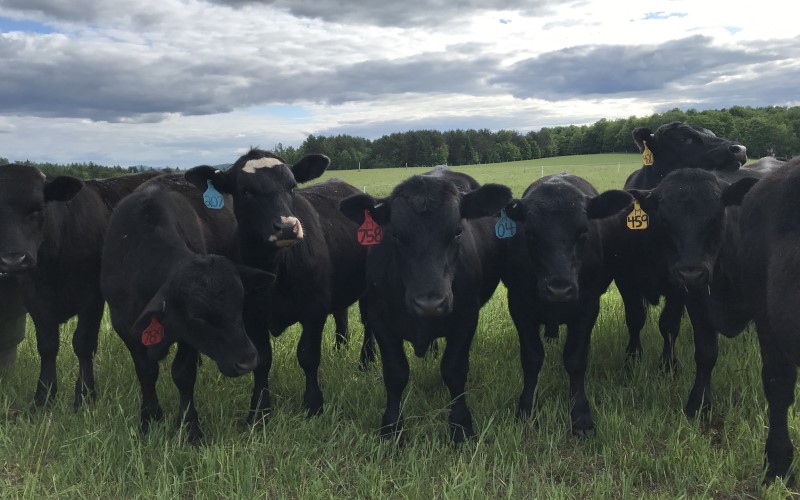Bagley Risk Management : Securing Your Organization Future
Bagley Risk Management : Securing Your Organization Future
Blog Article
Comprehending Livestock Danger Protection (LRP) Insurance: A Comprehensive Overview
Browsing the realm of livestock risk protection (LRP) insurance policy can be a complicated endeavor for numerous in the agricultural field. This type of insurance coverage supplies a safety web against market fluctuations and unpredicted conditions that can influence livestock producers. By recognizing the ins and outs of LRP insurance policy, manufacturers can make informed choices that might guard their operations from monetary risks. From just how LRP insurance policy functions to the different protection choices readily available, there is much to discover in this thorough overview that could possibly shape the way livestock manufacturers approach risk monitoring in their businesses.

Exactly How LRP Insurance Coverage Works
Periodically, understanding the auto mechanics of Livestock Threat Security (LRP) insurance coverage can be complicated, but damaging down just how it functions can give clarity for ranchers and farmers. LRP insurance policy is a danger administration tool developed to safeguard livestock manufacturers versus unexpected rate declines. The policy allows producers to set a coverage degree based upon their specific demands, selecting the variety of head, weight range, and insurance coverage rate. Once the plan remains in location, if market value fall below the insurance coverage cost, manufacturers can sue for the difference. It is necessary to note that LRP insurance policy is not a revenue guarantee; rather, it concentrates exclusively on price danger protection. The insurance coverage period generally ranges from 13 to 52 weeks, giving versatility for producers to choose a period that straightens with their production cycle. By using LRP insurance coverage, ranchers and farmers can minimize the financial dangers related to varying market value, guaranteeing greater security in their operations.
Eligibility and Insurance Coverage Options

When it comes to coverage choices, LRP insurance supplies manufacturers the flexibility to choose the insurance coverage level, coverage duration, and recommendations that ideal match their danger administration demands. By comprehending the qualification standards and insurance coverage options offered, livestock manufacturers can make educated decisions to handle risk efficiently.
Benefits And Drawbacks of LRP Insurance Coverage
When evaluating Livestock Threat Security (LRP) insurance policy, it is crucial for livestock manufacturers to weigh the benefits and drawbacks inherent in this danger monitoring tool.

One of the key advantages of LRP insurance is its capacity to provide protection versus a decrease in livestock prices. In addition, LRP insurance supplies a degree of adaptability, allowing producers to customize protection degrees and policy periods to fit their particular needs.
One restriction of LRP insurance is that it does not safeguard against all types of dangers, such as condition outbreaks or natural catastrophes. It is important for manufacturers to very carefully assess their private risk exposure and economic circumstance to establish if LRP insurance is the appropriate threat administration tool for their procedure.
Understanding LRP Insurance Policy Premiums

Tips for Making The Most Of LRP Conveniences
Making try this web-site best use of the benefits of Livestock Threat Defense (LRP) insurance calls for strategic planning and positive threat management - Bagley Risk Management. To take advantage see this website of your LRP insurance coverage, take into consideration the following ideas:
Routinely Examine Market Conditions: Remain informed concerning market trends and price variations in the livestock market. By monitoring these aspects, you can make educated decisions about when to buy LRP insurance coverage to shield against possible losses.
Set Realistic Coverage Levels: When selecting insurance coverage degrees, consider your production costs, market worth of animals, and prospective dangers - Bagley Risk Management. Setting realistic insurance coverage levels guarantees that you are adequately shielded without paying too much for unneeded insurance policy
Diversify Your Insurance Coverage: Rather than depending only on LRP insurance, take into consideration expanding your threat administration approaches. Combining LRP with other risk administration tools such as futures agreements or choices can supply extensive coverage against market unpredictabilities.
Testimonial and Change Insurance Coverage Routinely: As market conditions alter, occasionally review your LRP coverage to ensure it straightens with your present threat exposure. Adjusting coverage degrees and timing of acquisitions can help maximize your risk defense here technique. By complying with these tips, you can make the most of the benefits of LRP insurance and safeguard your animals operation versus unexpected threats.
Verdict
Finally, animals danger protection (LRP) insurance coverage is an important tool for farmers to handle the economic threats related to their animals procedures. By understanding just how LRP works, qualification and coverage alternatives, along with the benefits and drawbacks of this insurance, farmers can make enlightened decisions to secure their resources. By thoroughly considering LRP costs and applying strategies to make best use of advantages, farmers can minimize prospective losses and ensure the sustainability of their procedures.
Animals producers interested in obtaining Animals Danger Protection (LRP) insurance coverage can check out an array of qualification criteria and protection alternatives tailored to their particular animals operations.When it comes to insurance coverage alternatives, LRP insurance coverage offers producers the adaptability to pick the insurance coverage degree, coverage period, and endorsements that best fit their risk monitoring demands.To comprehend the complexities of Livestock Risk Protection (LRP) insurance totally, comprehending the aspects affecting LRP insurance policy premiums is critical. LRP insurance premiums are figured out by various aspects, consisting of the protection degree picked, the anticipated cost of animals at the end of the insurance coverage duration, the kind of animals being guaranteed, and the length of the protection period.Testimonial and Change Protection Consistently: As market problems change, periodically examine your LRP coverage to ensure it straightens with your current threat exposure.
Report this page